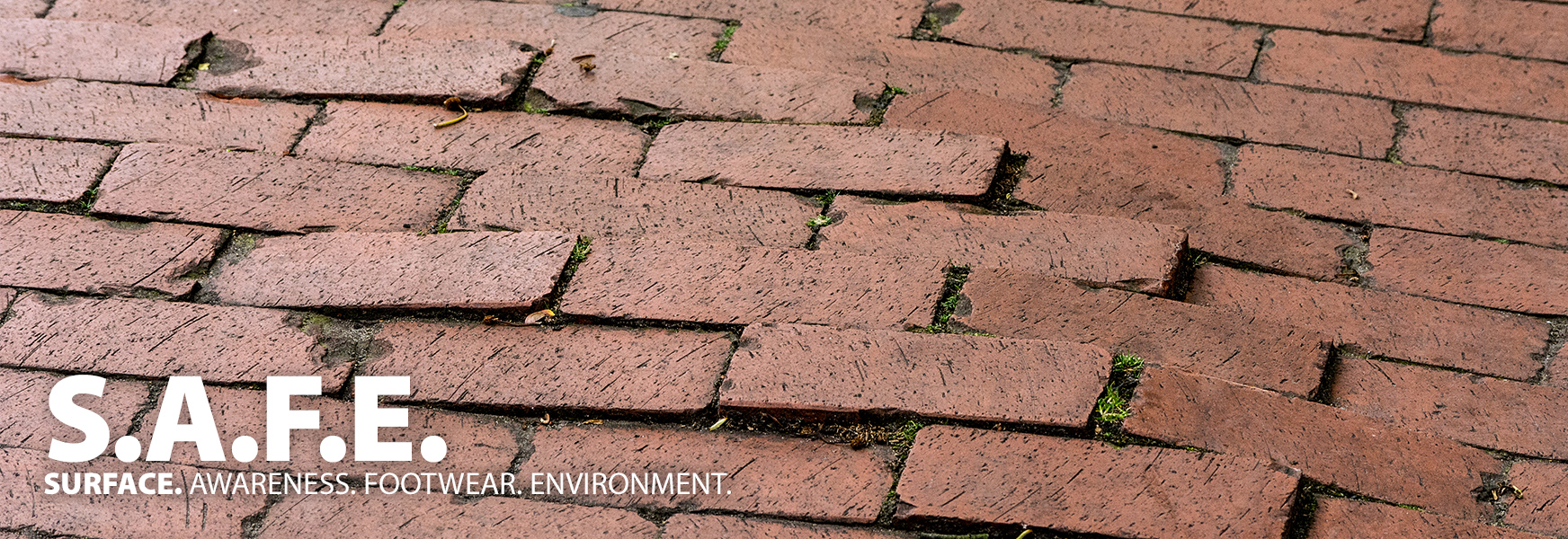Slip and Fall Prevention - The S.A.F.E. Way (Part 2)

S.A.F.E. - SURFACE, Awareness, Footwear, Environment
Getting to know the surface we walk on can help prevent slips and falls. Evaluate an existing surface by looking at its 4 C’s:
1. Surface Changes
Elevation: Changes in elevation under 12 inches in height can cause us to have the “one-inch heart attack” as we unexpectedly step down, or trip on the unseen lip between surfaces.
- Where are these changes located in your work area and how are staff made aware of their presence?
- If we can’t eliminate these elevation changes, increasing the lighting or marking the transitions with reflective or high visibility material can help.
Transitions: When a surface transitions from one material to another, like carpet to tile or asphalt to wood, the traction on that surface can change unexpectedly.
- How many material changes or transitions are there at your work place?
- Is it a transition from a high traction material to one with less? For example, from carpet to tile? How are workers made aware of these transitions?
2. Surface Condition
- New flooring or surface material will interact differently with your footwear than old or worn out flooring.
- New flooring maintenance must be in accordance with the manufacturer’s guidelines to maintain its slip resistant properties.
- Broken or damaged flooring or surfaces must be identified and repaired in a reasonable amount of time. Those areas should be cordoned off or highlighted to make workers aware of the hazard.
- Where are the areas of damaged flooring in your work area? What is the process for alerting maintenance about the problem?
3. Surface Composition
- Surface material determines its slip resistance. Having the right materials in the right areas is a great start to reducing slips and falls. Evaluating the need for highly slip resistant surfaces is a critical step when replacing flooring or designing a new facility. Some things to consider are:
- Can you control the footwear in the area or can all footwear types be expected on the surface?
- Can you control the presence of surface contamination?
- Can you use mats or other runners to reduce the slip and fall potential in higher hazard areas?
4. Surface Contamination
- What’s outside should stay outside. Also, what’s inside equipment should stay inside. When water, oil, snow, sand, or other material gets onto our walking and working surfaces, they can become more hazardous.
- Where are the areas in your workplace where worksurfaces can get contaminated and become slippery? Entryways, restrooms, transitions for manufacturing, or preparation areas can become very hazardous when contaminated.
- Determine what can be done in these areas to help limit the type of contamination and length of time the surface is contaminated.
- Does your facility have a spill clean-up plan?
Knowing your surfaces and its characteristics can help prevent slips and falls. Use the MEMIC Safety Director resources, including a Flooring Scoring Worksheet to evaluate and prioritize the surfaces in your workplace to start making changes.
So, get out there, go for a walk, and get to know your flooring better.

